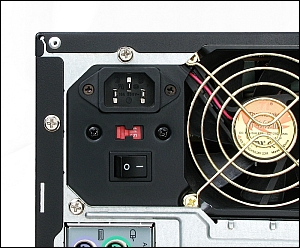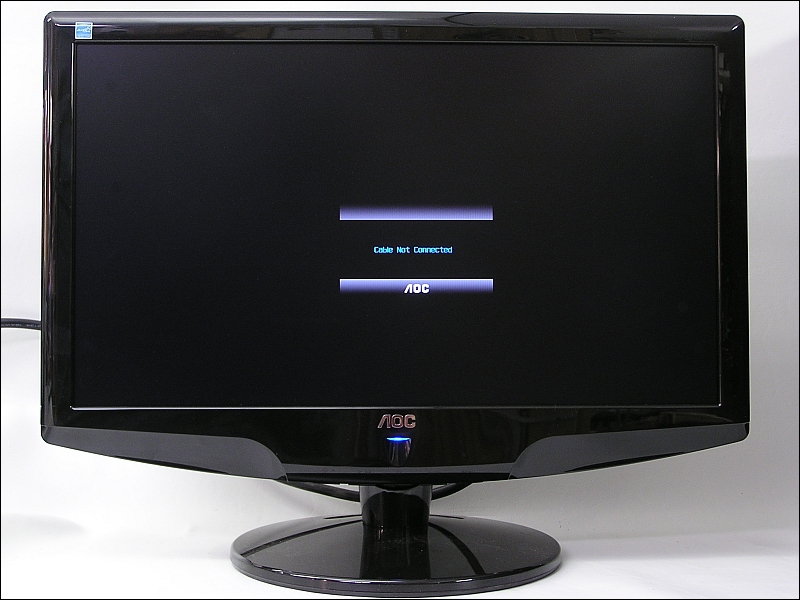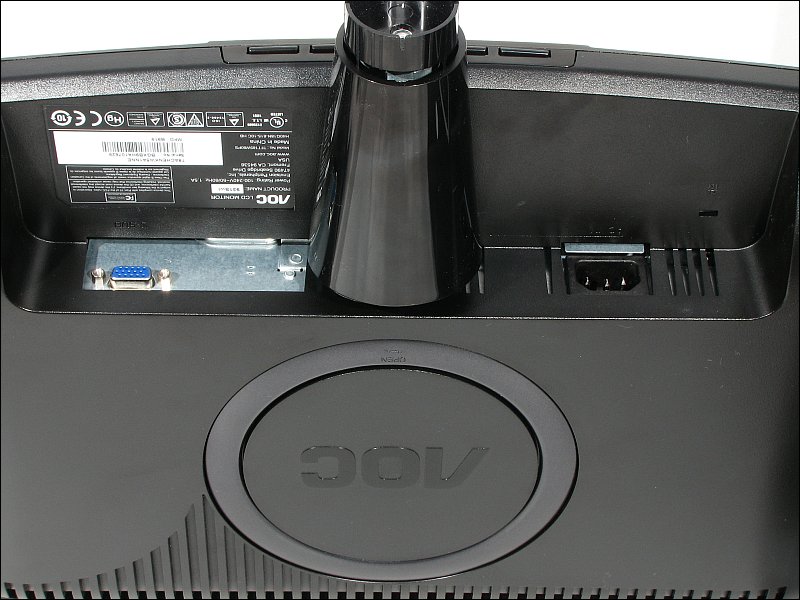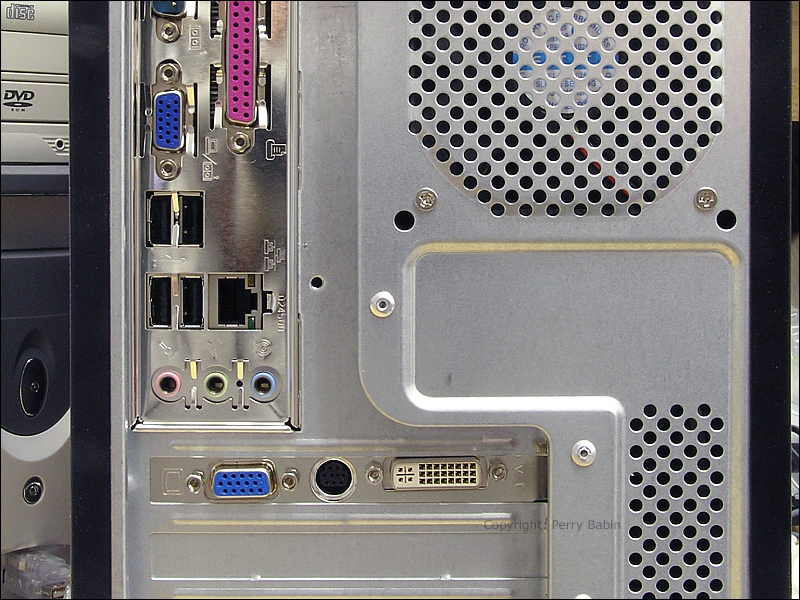|
Turning the Computer On...
OK, if you're reading this right now, you've obviously successfully powered up your computer. This page is for the times when something goes wrong.
 As you probably already know, you use the front power button to switch on the computer. If it does not power up, you should check to see that the rear power supply switch is set to the '1' position. The '0' position is OFF. In the image to the right, the switch is in the '1', on position. The socket with the 3 prongs above the red switch is where the power cord should be plugged into the power supply. Make sure that it's properly seated (pushed in all of the way). The other end of the power cord, obviously, goes into a power outlet. If the computer still fails to power up, you should check the see that it's plugged into a working outlet and make sure that the power strip's main power switch is in the ON position (if you have a power strip). Most power strips have an indicator lamp to let you know that they're on AND that the strip is plugged into a working outlet. Assuming that your computer is in good working order, it will come on when you push the main power button. When it powers up, the 'power' light will be lit and the hard drive activity light will be flashing/flickering. You will also hear the hard drives 'spin up' and you'll likely hear at least one fan turn on.
As you probably already know, you use the front power button to switch on the computer. If it does not power up, you should check to see that the rear power supply switch is set to the '1' position. The '0' position is OFF. In the image to the right, the switch is in the '1', on position. The socket with the 3 prongs above the red switch is where the power cord should be plugged into the power supply. Make sure that it's properly seated (pushed in all of the way). The other end of the power cord, obviously, goes into a power outlet. If the computer still fails to power up, you should check the see that it's plugged into a working outlet and make sure that the power strip's main power switch is in the ON position (if you have a power strip). Most power strips have an indicator lamp to let you know that they're on AND that the strip is plugged into a working outlet. Assuming that your computer is in good working order, it will come on when you push the main power button. When it powers up, the 'power' light will be lit and the hard drive activity light will be flashing/flickering. You will also hear the hard drives 'spin up' and you'll likely hear at least one fan turn on.
If there is absolutely no response from your computer when you try to power it up, you (or someone you trust to work on your computer) would need to do some troubleshooting. That will be covered later in this tutorial.
Previously, power strips were mentioned. When you buy a power switch for your computer or any expensive/sensitive mains powered equipment, you should buy a power strip with a built-in surge protector. Most all power strips offer some level of surge protection but those specifically sold as surge protectors generally offer better protection. This is one item that you don't want to skimp on. No surge protector can protect from all power surges/lightning strikes but a good quality surge protector can protect from all but the worst surges. Another type of device that can offer a bit more protection is the UPS (Uninterruptible Power Supply). The UPS converts the mains voltage to DC then back to an AC voltage to be used by your computer. Inside the UPS, there is a battery. When there is a brown-out or a black-out, the computer doesn't lose power because it runs off of the battery. These are designed to supply power for only a short time. The smallest ones only give you time to save all of your material and shut the computer down normally. The larger ones can give considerably more run-time but are larger and more expensive.
More On Booting Up:
In general, a computer is nothing more than a processor of ones and zeros. Without some basic instructions, it is essentially useless. When you power up your computer, the information on a small programmable IC is accessed. When this basic code (known as the BIOS -- which I will cover later) is executed, only then can the computer do anything useful. After this basic information is used, the computer then looks for instructions on the hard drive (and/or other drives). When it finds the appropriate information, it then pulls that information from the hard drive and produces what's known as a GUI (Graphical User Interface). Not so long ago (in the early 1980's), there was virtually no graphical interface (other than text), no mouse, no icons. It was very different from today. Computers were little more than number-crunchers. There was essentially no music or video (nothing like what we have today). When you wanted to make a selection, you typically had to enter a number from a list (even up/down arrow selection from a list was almost non-existent). OK, enough of that....
What if You Have No Display?
If you can see that the computer is working to 'boot up' after you press the power button (power indicator lit and hard drive activity indicator flickering) but you have no display (completely dark screen on the monitor), make sure the monitor is on and is its power indicator is lit (may be lit a different color from what it normally is, i.e. amber instead of blue or green). If there is no indication that it's on, make sure that its power cable is plugged into the monitor and into a working wall outlet. Also make sure that you have the power switch on. If the power indicator is lit and there is something on the screen telling you that there is no video, the video cable may not be plugged into the VGA port on your computer or on the monitor. Make sure that both ends are fully seated. It's not necessary for the thumbscrews to be tight in the VGA connectors but if you don't think the cables are remaining fully seated, you should snug them down.

The image below shows you what the VGA and power connectors look like on most monitors. This monitor uses a universal power cord. Some monitors use an external DC power supply and the monitor operates off of (approximately) 12v DC.

If you look at the bottom edge of the monitor in the previous image (the bottom edge is actually on top since the monitor is upside-down), you can see the buttons for the monitor. Sometimes the buttons are difficult to find. They are rarely on the front of the monitors nowadays. Sometimes, you have to push the button to see the function of the buttons (on-screen display pops up). If they're marked, many times you need a lighted magnifying glass to see them.
Note:
On some computers there will be 2 or more VGA connectors. It's very common to have 'two' VGA connectors. Many motherboards (the main circuit board in the computer that serves as the interface for most of the computer's electronics) have on-board video processors but the on-board video processors (also known as 'integrated video cards' or 'integrated video processors') slow down the rest of the computer or don't perform well enough for the owner. For this reason, the computer may have a second, discrete video card installed. If you see a second VGA port, it's likely that the second port is the one you need to use. When you have a dedicated video card, the integrated video processor will almost always be disabled.
As you can see on the computer below, there are 2 blue (VGA) connectors on this computer. When the monitor is connected to this computer, it has to be connected to the blue connector on the video card in the expansion slot. You should notice that there are two other connectors on the video card. They are for other video formats. I will cover their function on an upcoming page.

|
You May Be Interested in My Other Sites
-
This site was started for pages/information that didn't fit well on my other sites. It includes topics from backing up computer files to small engine repair to 3D graphics software to basic information on diabetes.
-
This site introduces you to macro photography. Macro photography is nothing more than the photography of small objects. It can take quite a while to understand the limitations associated with this type of photography. Without help, people will struggle to get good images. Understanding what's possible and what's not possible makes the task much easier. If you need to photograph relatively small objects (6" in height/width down to a few thousandths of an inch), this site will help.
-
If you're interested in air rifles, this site will introduce you to the types of rifles available and many of the things you'll need to know to shoot accurately. It also touches on field target competition. There are links to some of the better sites and forums as well as a collection of interactive demos.
-
This site is for those who want to install or update their car stereo. It begins with the most basic electronics theory, progresses into basic transistor theory as well as covering virtually everything associated with car audio.
|
|



 As you probably already know, you use the front power button to switch on the computer. If it does not power up, you should check to see that the rear power supply switch is set to the '1' position. The '0' position is OFF. In the image to the right, the switch is in the '1', on position. The socket with the 3 prongs above the red switch is where the power cord should be plugged into the power supply. Make sure that it's properly seated (pushed in all of the way). The other end of the power cord, obviously, goes into a power outlet. If the computer still fails to power up, you should check the see that it's plugged into a working outlet and make sure that the power strip's main power switch is in the ON position (if you have a power strip). Most power strips have an indicator lamp to let you know that they're on AND that the strip is plugged into a working outlet. Assuming that your computer is in good working order, it will come on when you push the main power button. When it powers up, the 'power' light will be lit and the hard drive activity light will be flashing/flickering. You will also hear the hard drives 'spin up' and you'll likely hear at least one fan turn on.
As you probably already know, you use the front power button to switch on the computer. If it does not power up, you should check to see that the rear power supply switch is set to the '1' position. The '0' position is OFF. In the image to the right, the switch is in the '1', on position. The socket with the 3 prongs above the red switch is where the power cord should be plugged into the power supply. Make sure that it's properly seated (pushed in all of the way). The other end of the power cord, obviously, goes into a power outlet. If the computer still fails to power up, you should check the see that it's plugged into a working outlet and make sure that the power strip's main power switch is in the ON position (if you have a power strip). Most power strips have an indicator lamp to let you know that they're on AND that the strip is plugged into a working outlet. Assuming that your computer is in good working order, it will come on when you push the main power button. When it powers up, the 'power' light will be lit and the hard drive activity light will be flashing/flickering. You will also hear the hard drives 'spin up' and you'll likely hear at least one fan turn on.